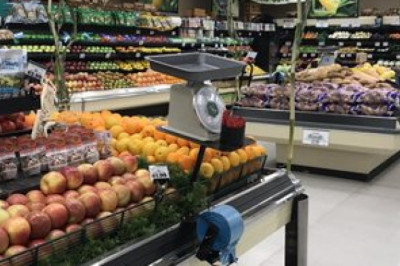views
According to the research report, the global mattress market was valued at USD 43.85 billion in 2023 and is expected to reach USD 76.31 billion by 2032, to grow at a CAGR of 6.4% during the forecast period.
Consumer focus is shifting from basic comfort to holistic sleep wellness, pushing manufacturers to innovate in areas such as latex mattresses, adjustable beds, and the use of eco-friendly materials. This press release outlines the current state of the market, key segments, emerging country-wise trends, and major companies shaping the industry.
Market Overview
The mattress market is undergoing a profound transformation as consumer preferences evolve beyond traditional coil mattresses. Increasing awareness of the link between sleep and overall health is driving the adoption of premium products that promise better sleep quality.
While conventional innerspring mattresses still dominate in volume, memory foam, hybrid, and latex mattresses are rapidly gaining ground. Additionally, the rise of adjustable beds, particularly among aging populations and individuals with mobility issues, is boosting sales in developed economies.
Technological integration—such as sleep tracking sensors, cooling gels, and zoned support—is another area propelling the market forward. Meanwhile, environmental concerns are encouraging companies to invest in eco-friendly materials, like organic cotton, bamboo fiber, and recyclable foam.
Market Segmentation
The mattress market can be segmented by product type, material, distribution channel, and end-use.
By Product Type:
-
Innerspring Mattresses
-
Memory Foam Mattresses
-
Latex Mattresses
-
Hybrid Mattresses
-
Adjustable Beds
By Material:
-
Polyurethane Foam
-
Natural Latex
-
Gel
-
Eco-Friendly Materials (bamboo, organic cotton, wool)
By Distribution Channel:
-
Offline (Furniture Stores, Specialty Retailers)
-
Online (Brand Websites, Marketplaces)
By End-Use:
-
Residential
-
Commercial (Hotels, Hospitals, Dormitories)
Browse Full Insights:
https://www.polarismarketresearch.com/industry-analysis/mattress-market
Country-Wise Market Trends
United States
The U.S. remains the largest single market for mattresses globally, accounting for nearly 35% of total market value. Factors contributing to growth include the high penetration of adjustable beds, increasing consumer investment in sleep-enhancing products, and a booming e-commerce sector. Direct-to-consumer (DTC) brands like Casper and Purple continue to disrupt traditional retail models by offering home delivery, trial periods, and subscription-based services.
Growing interest in sustainable living has also pushed U.S. consumers to opt for mattresses made with eco-friendly materials and manufactured through carbon-neutral processes.
Germany
Germany is one of Europe’s fastest-growing mattress markets, where sleep science plays a key role in product development. German consumers are highly discerning and prioritize sleep quality over price, favoring orthopedic and ergonomic designs.
The use of natural latex mattresses is especially high due to their durability and hypoallergenic properties. Sustainable manufacturing is a key trend, with brands incorporating eco-certifications (like OEKO-TEX and GOTS) to meet consumer expectations.
India
India represents an emerging growth opportunity, with a rapidly expanding middle class and increasing awareness about sleep-related wellness. Traditionally dominated by cotton-filled and coir mattresses, the Indian market is now seeing a shift toward foam and latex mattresses, particularly in urban areas.
E-commerce penetration is strong, and brands like Wakefit and SleepyCat are leveraging digital platforms to offer cost-effective, quality mattresses with attractive return policies. As disposable incomes rise, more consumers are exploring adjustable beds and smart mattresses.
China
China is undergoing a paradigm shift in the mattress market, driven by changing lifestyle patterns and urbanization. There’s a growing demand for high-end products, especially in tier-1 and tier-2 cities. Smart and adjustable beds are gaining favor among elderly consumers and tech-savvy younger buyers alike.
Domestic brands are increasingly competing with global players by offering innovative features like AI-driven sleep monitoring, temperature control, and customizable support zones. Moreover, government support for green manufacturing has led to greater usage of eco-friendly materials.
United Kingdom
The UK mattress market is mature but still evolving. Consumers are replacing their mattresses more frequently—on average every 7–8 years—creating sustained demand. While hybrid and pocket-sprung mattresses are still popular, foam and latex mattresses are rapidly rising in demand due to their comfort and sustainability.
The rising popularity of online-first mattress-in-a-box models like Simba and Emma has altered consumer behavior significantly. Moreover, a growing focus on sleep hygiene is making sleep quality an important selling point across all market segments.
Australia
Australia’s mattress market has seen consistent growth driven by urbanization, housing development, and consumer preference for premium products. Mattress brands are increasingly promoting health benefits and eco-friendly materials, aligning with Australian consumers' values around sustainability and wellness.
The country's unique climate also drives demand for temperature-regulating materials and moisture-wicking covers. Brands are also embracing the demand for locally made products with reduced environmental impact.
Key Companies
Tempur Sealy International, Inc.
A global leader, Tempur Sealy offers a wide range of products across price points. Its Tempur-Pedic line continues to dominate the premium memory foam and orthopedic segment, while its hybrid models integrate cutting-edge sleep quality features such as zoned support and temperature control.
Serta Simmons Bedding
With a strong presence in North America, Serta Simmons caters to a broad consumer base and is investing heavily in adjustable bed technology and smart features. The brand's Perfect Sleeper line targets consumers looking for affordability without compromising on quality.
Sleep Number Corporation
Sleep Number has redefined the premium mattress space with its tech-forward, data-driven approach. Its 360 Smart Beds track biometrics, adjust firmness in real-time, and offer sleep insights through a mobile app, making it a frontrunner in the sleep quality revolution.
Emma – The Sleep Company
Emma has rapidly expanded from Europe to global markets with its foam and hybrid mattresses. Its emphasis on ergonomic design, affordable pricing, and user-centric online experience has made it a market disruptor. Emma is also expanding its line of products made with eco-friendly materials.
King Koil
With a long-standing reputation in both retail and hospitality segments, King Koil focuses on luxury, comfort, and orthopedic support. The brand is now integrating latex mattresses and natural fibers to cater to wellness-conscious customers.
Wakefit Innovations Pvt. Ltd.
One of India’s most successful DTC mattress brands, Wakefit has disrupted the traditional market by offering high-quality mattresses at competitive prices. Its focus on innovation, affordability, and logistics efficiency has made it a household name in Indian metros.
Conclusion
The global mattress market is undergoing a structural shift, moving away from one-size-fits-all products toward customized, wellness-oriented, and sustainable solutions. As consumers become more aware of the importance of sleep quality, their expectations from mattresses have evolved, pushing brands to innovate with materials like natural latex, tech-integrated adjustable beds, and eco-friendly materials.
This evolution is not limited to advanced economies—emerging markets like India and China are quickly catching up, driven by rising incomes, e-commerce access, and changing lifestyles. Key players are responding with aggressive R&D, strategic partnerships, and localized marketing efforts.
With the intersection of technology, health, and sustainability defining the future, the mattress market is poised for dynamic growth in the years ahead.
More Trending Reports by Polaris Market Research:
Cigarette Vending Machine Market
Digitally Printed Wallpaper Market
Fishing Apparel and Equipment Market




















Comments
0 comment